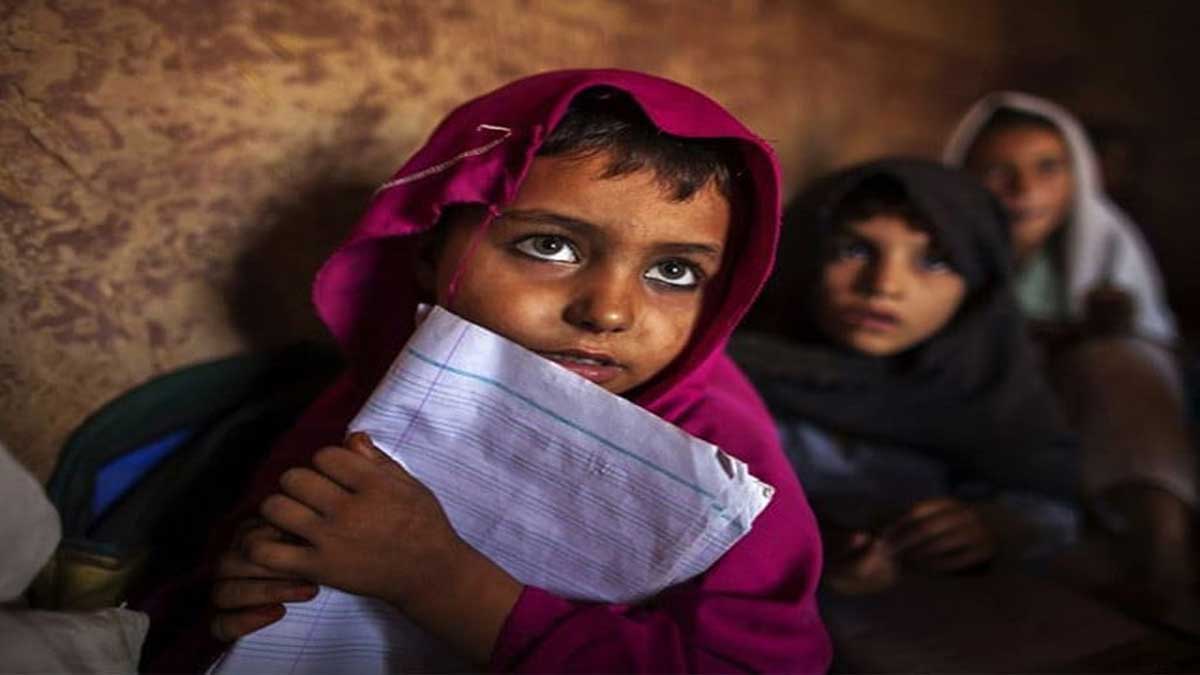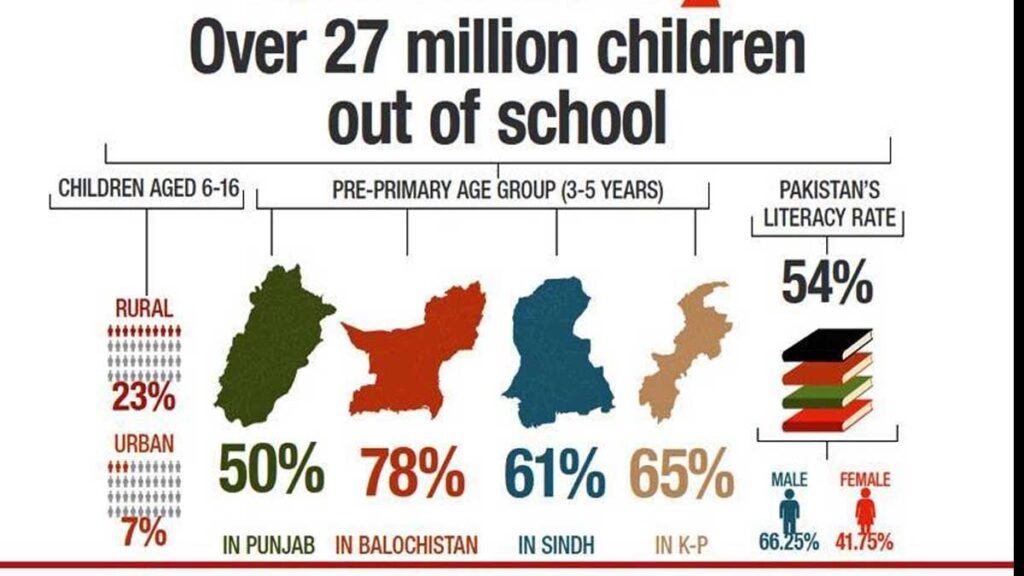National
Report Says Pakistan education problem becomes more than 36% of children are not in school
Published
4 months agoon
By
Jamshed Khan
A shocking 25.3 million kids have Pakistan education problem, ages 5 to 16, are not in school right now. That’s 36% of the country’s school-age population.
A study called The Missing Third of Pakistan, put out by the Pak Alliance for Maths and Science (PAMS), talks about these scary numbers.
Based on statistics from the 2023 Population Census, this report is the first in-depth look at OOSC at the tehsil level to be released.
The study is very negative about the country’s school system, and most of the kids who are affected (74%) live in rural areas.
Trying to get more students to join in these areas is hard because of things like poverty, social barriers, and limited access to schools.
The gap between rural and urban areas in terms of educational opportunity is growing. In rural areas alone, 18.8 million kids are not in school.

Children ages 5 to 9
Children ages 5 to 9 are especially at risk, since 51% of kids in this age group have never been to school.
Worse still, more than half of these kids have quit school or are no longer going to school.
Because basic school skills are usually learned at this age, these early failures are likely to have long-lasting effects on literacy rates.
Enrollment Delays Due to Pakistan Education problem
The delay in enrollment is a big problem, especially in rural areas where money problems and a lack of facilities keep a lot of kids from going to school.
Disparities between men and women make the situation even worse.
Ages 5 to 16
More than 80% of girls ages 5 to 16 in some tehsils have never been to school. This shows how unequal access to education is for boys and girls.
The difference in how much schooling boys and girls have is getting bigger. Girls often don’t go to school because of cultural and socioeconomic barriers.
People usually think that urban areas are better equipped for schooling, but they are not immune to the problem.
Even though Pakistan education problem are in Karachi and Lahore the provincial capitals and have more educational tools, a lot of kids still don’t go to school there
Another important fact is that almost 1.8 million children in Karachi alone are not in school, which shows how bad the situation is.
Study Problems
The “Missing Third” study stresses how important it is to use data to quickly fix these problems in education.
It asks for targeted interventions, especially in tehsils with the largest number of kids who aren’t in school, to close the education gap between rural and urban areas.
The study also asks the federal and provincial governments to work together to fix these problems and make building the infrastructure that can help more students a top priority.
Experts say that if nothing is done right away for the Pakistan education problem, the situation could get worse, which would hurt Pakistan’s future population and economic growth.
Lack of early education creates basic gaps that will make it harder for kids to catch up later on. This could lower the number of people who can read and write and make it harder for people to move up in society.
The study urges policymakers, educators, and members of the public to work together to find solutions to this growing problem.
Even though the country is dealing with these shocking numbers, the school system still needs major changes.
The results make it clear that making sure everyone has equal access to education should be a national goal, especially girls and people who live in rural areas.
You may like
Trending

 Entertainment7 months ago
Entertainment7 months agoTruth of Bado Badi girl leak video has Come out

 National8 months ago
National8 months agoFamous YouTuber Ducky Bhai announced to give 10 lakh rupees

 International8 months ago
International8 months agoمیا خلیفہ کے ایڈلٹ انڈسٹری کے تاریخی پہلوؤں پر نظر

 Technology8 months ago
Technology8 months agoHaier Introduced Zero Electricity Bill Hybrid Solar AC

 Cooking Recipes9 months ago
Cooking Recipes9 months agoمزیدار ریسپی پیری پیری بائٹس








